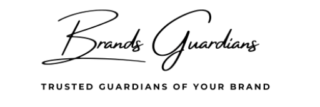Meta (formerly Facebook) Ads have become an essential tool for businesses aiming to reach their target audience effectively. With advanced targeting options and AI-driven optimization, Meta Ads provide brands with a powerful platform to drive engagement, generate leads, and boost conversions. However, several factors influence the success of Meta Ads campaigns. Let’s explore the key elements that can make or break your Meta advertising efforts.
- Audience Targeting
One of the biggest advantages of Meta Ads is its sophisticated targeting options. Marketers can define their audience based on various factors, such as:
Demographics: Age, gender, location, language, education, and job title.
Interests and Behavior: Hobbies, past purchases, pages liked, and browsing behavior.
Custom Audiences: Retarget users who have previously interacted with your business.
Lookalike Audiences: Reach new users similar to your existing customers.
Precise targeting ensures that your ad reaches the most relevant audience, increasing the chances of engagement and conversions.
- Ad Creatives and Visual Appeal
The visual aspect of your ad plays a crucial role in grabbing attention. Key elements include:
High-Quality Images or Videos: Clear, high-resolution visuals perform better.
Engaging Copy: The ad text should be compelling, concise, and relevant.
CTA (Call-to-Action): A strong CTA (e.g., “Shop Now,” “Sign Up,” “Learn More”) encourages users to take action.
Brand Consistency: Maintaining a consistent brand voice and design increases recognition.
A/B testing different creatives can help determine what resonates best with your audience.
- Ad Placement Strategy
Meta offers multiple ad placements across its platforms, including:
Facebook Feed
Instagram Feed & Stories
Messenger
Audience Network
Reels
Right Column Ads
Choosing the right placement based on your audience’s behavior and ad objectives can impact the effectiveness of your campaign. Automatic placements can be useful for optimization, but manual selection allows for more control.
- Ad Relevance and Quality Score
Meta evaluates ads based on relevance and engagement. Factors that affect your ad score include:
Engagement Rate: Likes, comments, shares, and click-through rates.
User Feedback: Positive vs. negative feedback from viewers.
Landing Page Experience: A well-designed, fast-loading, and relevant landing page improves ad performance.
A high relevance score results in lower costs and better placement opportunities.
- Budget and Bidding Strategy
Your ad budget and bidding strategy determine how often your ad is shown. Consider:
Daily vs. Lifetime Budget: Choose based on campaign duration and goals.
Manual vs. Automatic Bidding: Meta’s AI optimizes automatic bids for better performance.
Cost per Click (CPC) vs. Cost per Impression (CPM): Choose based on whether you want clicks or visibility.
Setting realistic budgets and optimizing bid strategies ensures efficient ad spend.
- Campaign Objective Selection
Meta Ads allow you to choose objectives based on your marketing goals:
Awareness: Brand awareness, reach
Consideration: Traffic, engagement, lead generation, video views
Conversion: Sales, app installs, store visits
Selecting the right objective ensures Meta’s algorithm optimizes ad delivery for the desired action.
- Performance Analysis and Optimization
Tracking and analyzing campaign performance is essential for continuous improvement. Key metrics to monitor include:
CTR (Click-Through Rate): Indicates how engaging your ad is.
Conversion Rate: Measures how many users complete the desired action.
ROAS (Return on Ad Spend): Helps evaluate profitability.
Ad Frequency: Avoids ad fatigue by ensuring the same audience doesn’t see the ad too often.
Regular A/B testing and performance adjustments help maximize ad efficiency.
Meta (formerly Facebook) Ads have become an essential tool for businesses aiming to reach their target audience effectively. With advanced targeting options and AI-driven optimization, Meta Ads provide brands with a powerful platform to drive engagement, generate leads, and boost conversions. However, several factors influence the success of Meta Ads campaigns. Let’s explore the key elements that can make or break your Meta advertising efforts.
- Audience Targeting
One of the biggest advantages of Meta Ads is its sophisticated targeting options. Marketers can define their audience based on various factors, such as:
Demographics: Age, gender, location, language, education, and job title.
Interests and Behavior: Hobbies, past purchases, pages liked, and browsing behavior.
Custom Audiences: Retarget users who have previously interacted with your business.
Lookalike Audiences: Reach new users similar to your existing customers.
Precise targeting ensures that your ad reaches the most relevant audience, increasing the chances of engagement and conversions.
- Ad Creatives and Visual Appeal
The visual aspect of your ad plays a crucial role in grabbing attention. Key elements include:
High-Quality Images or Videos: Clear, high-resolution visuals perform better.
Engaging Copy: The ad text should be compelling, concise, and relevant.
CTA (Call-to-Action): A strong CTA (e.g., “Shop Now,” “Sign Up,” “Learn More”) encourages users to take action.
Brand Consistency: Maintaining a consistent brand voice and design increases recognition.
A/B testing different creatives can help determine what resonates best with your audience.
- Ad Placement Strategy
Meta offers multiple ad placements across its platforms, including:
Facebook Feed
Instagram Feed & Stories
Messenger
Audience Network
Reels
Right Column Ads
Choosing the right placement based on your audience’s behavior and ad objectives can impact the effectiveness of your campaign. Automatic placements can be useful for optimization, but manual selection allows for more control.
- Ad Relevance and Quality Score
Meta evaluates ads based on relevance and engagement. Factors that affect your ad score include:
Engagement Rate: Likes, comments, shares, and click-through rates.
User Feedback: Positive vs. negative feedback from viewers.
Landing Page Experience: A well-designed, fast-loading, and relevant landing page improves ad performance.
A high relevance score results in lower costs and better placement opportunities.
- Budget and Bidding Strategy
Your ad budget and bidding strategy determine how often your ad is shown. Consider:
Daily vs. Lifetime Budget: Choose based on campaign duration and goals.
Manual vs. Automatic Bidding: Meta’s AI optimizes automatic bids for better performance.
Cost per Click (CPC) vs. Cost per Impression (CPM): Choose based on whether you want clicks or visibility.
Setting realistic budgets and optimizing bid strategies ensures efficient ad spend.
- Campaign Objective Selection
Meta Ads allow you to choose objectives based on your marketing goals:
Awareness: Brand awareness, reach
Consideration: Traffic, engagement, lead generation, video views
Conversion: Sales, app installs, store visits
Selecting the right objective ensures Meta’s algorithm optimizes ad delivery for the desired action.
- Performance Analysis and Optimization
Tracking and analyzing campaign performance is essential for continuous improvement. Key metrics to monitor include:
CTR (Click-Through Rate): Indicates how engaging your ad is.
Conversion Rate: Measures how many users complete the desired action.
ROAS (Return on Ad Spend): Helps evaluate profitability.
Ad Frequency: Avoids ad fatigue by ensuring the same audience doesn’t see the ad too often.
Regular A/B testing and performance adjustments help maximize ad efficiency.
Final Thoughts
Success with Meta Ads depends on a combination of strategic targeting, compelling creatives, proper budget allocation, and continuous optimization. By understanding and leveraging these key factors, businesses can create highly effective ad campaigns that drive meaningful results. Stay updated with Meta’s evolving ad platform to remain competitive and get the best ROI from your advertising efforts.



